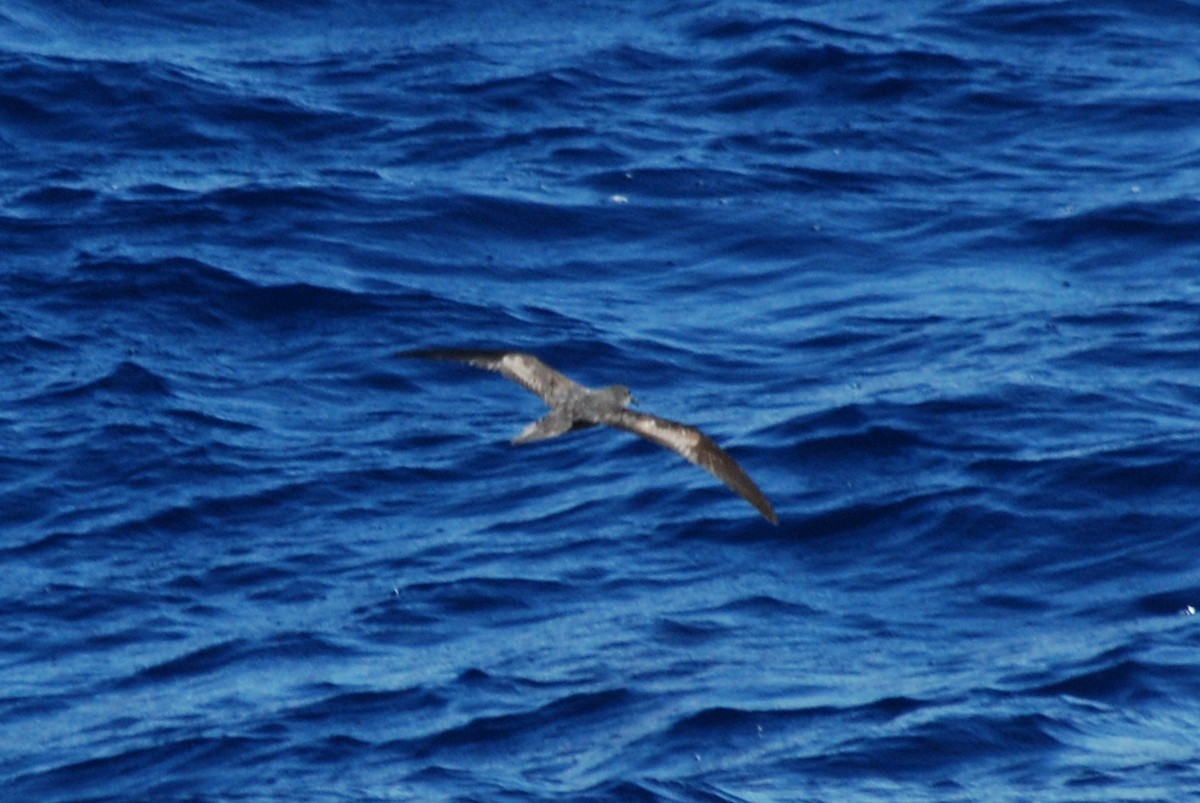Bulwer's Petrel
A species of Bulwer'S and Jouanin'S Petrels Scientific name : Bulweria bulwerii Genus : Bulwer'S and Jouanin'S Petrels
Bulwer's Petrel, A species of Bulwer'S and Jouanin'S Petrels
Botanical name: Bulweria bulwerii
Genus: Bulwer'S and Jouanin'S Petrels
Content
Description General Info
 Photo By Nigel Voaden
Photo By Nigel Voaden Description
This very long-winged petrel is 25–29 cm (9.8–11.4 in) in length with a 78–90 cm (31–35 in) wingspan. It has mainly brown plumage and a long pointed tail. It has a buoyant twisting flight as it picks planktonic food items from the ocean surface. 
Size
23 - 41 cm
Life Expectancy
18.3-24 years
Nest Placement
Cliff
Feeding Habits
Bulwer's Petrel's primary diet includes fish, fish eggs, squid, and crustaceans. It employs nocturnal foraging strategies at sea, capturing prey near the surface. Bulwer's Petrel displays unique adaptations like dynamic soaring and surface-seizing to efficiently exploit available marine resources.
Habitat
Bulwer's Petrel is a marine species that inhabits the open ocean, being highly pelagic and typically found far from land, except during the breeding season. Its breeding grounds comprise barren offshore islands across a broad range of geographical regions, where it exploits diverse nesting habitats. These habitats include cliffs, boulder scree, sandy shores, and volcanic islands. Nesting sites can vary widely, utilizing rock and coral rubble, natural overhangs, crevices, and occasionally repurposing human-made debris or abandoned burrows of other species.
Dite type
Piscivorous
General Info
Feeding Habits
Bird food type
Distribution Area
The species has a wide distribution through tropical and subtropical regions of the Atlantic, Indian and Pacific oceans, it is a year-round resident in Cabo Verde, China, French Guiana, Indonesia, Japan, Malaysia, Mauritania, Morocco, Saint Helena, Ascension and Tristan da Cunha, Senegal and Taiwan, it breeds in the Macaronesian Islands and continental Portugal in the Atlantic; and from eastern China and the Bonin Islands, east to the Hawaiian Islands, the Marquesas Islands, the United States Minor Outlying Islands and Kiribati in the Pacific. It is marine and higly pelagic, usually found far from land except during the breeding season. This species has been sighted in Europe as a rare vagrant to Ireland, the Netherlands, France and Italy. It has also appeared as a vagrant in North America, with rare sightings far off the coast of both California and North Carolina and Australia 
Species Status
In the North East Atlantic, the species is predated by cats, house rats and endemic invertebrates. Feral cats are considered a major driver of the present distribution of the species. In the Azores, breeding areas are restricted to steep cliffs to avoid cat predation. In one colony on Madeira, predation of Shearwater chicks by Madeiran wall lizards has been recorded in up to 10% of nests, though it is highly unlikely to have an impact on the species on a population level. The large colony in the Desertas Islands suffers intense human exploitation for food or fish bait, which also occurs at a lower level in other North East Atlantic sites, although not in the Salvage Islands following the declaration of the islands as a nature reserve. The Bulwer's petrel is thought to suffer a heightened risk of mortality from oil spills and other marine pollution, including light pollution at night. Tourism and recreational developments may reduce available habitat in breeding colonies. 

 Photo By Nigel Voaden
Photo By Nigel Voaden Scientific Classification
Phylum
Chordates Class
Birds Order
Albatrosses and Petrels Family
Shearwaters and petrels Species
Bulwer's Petrel